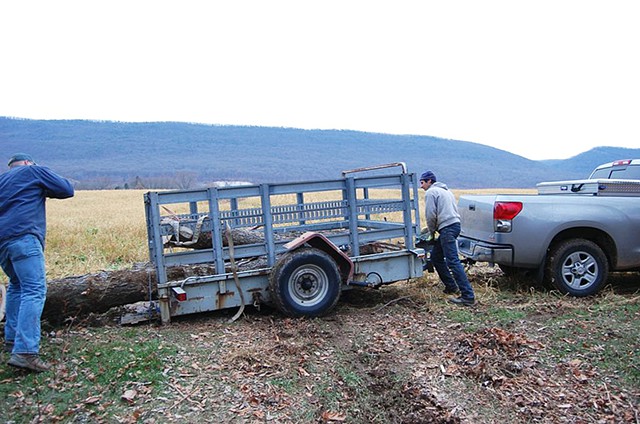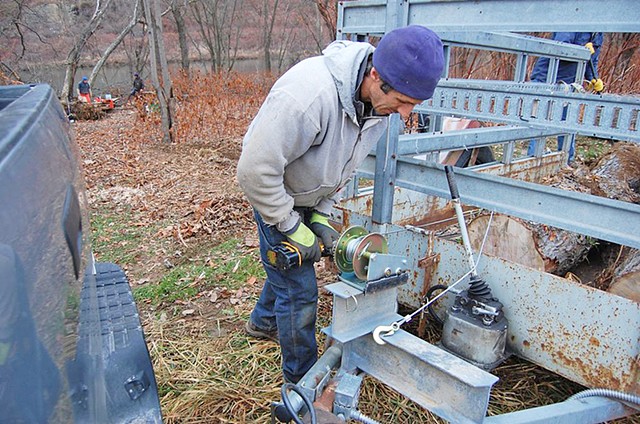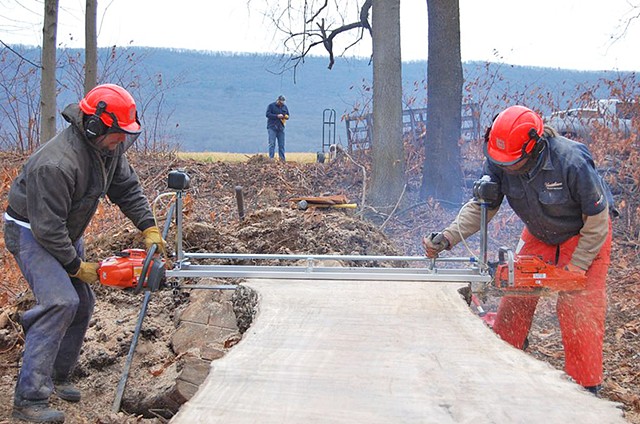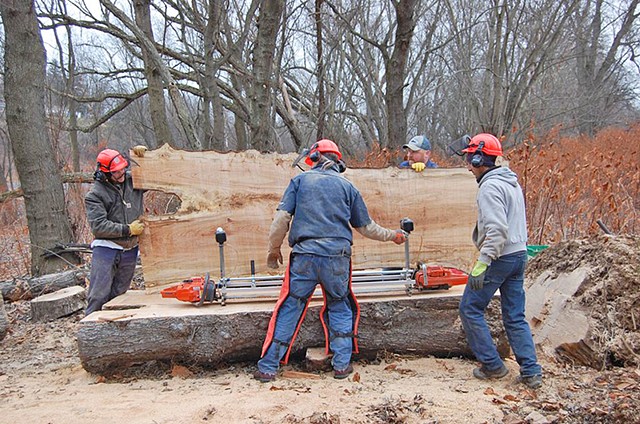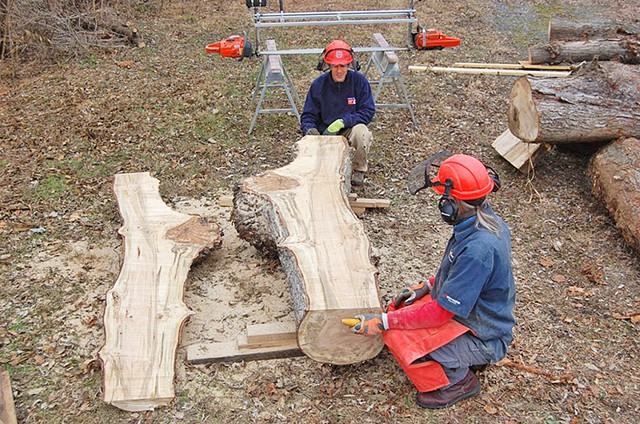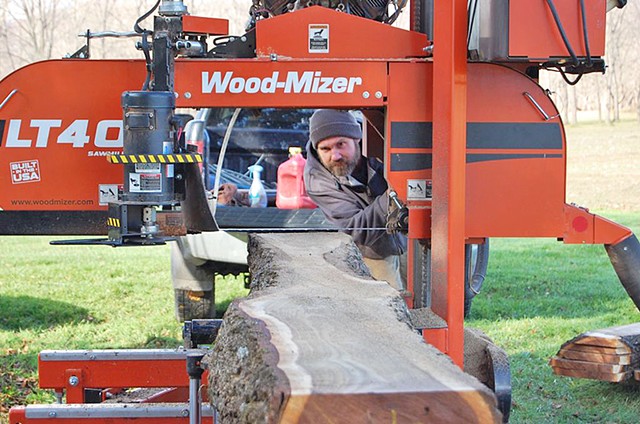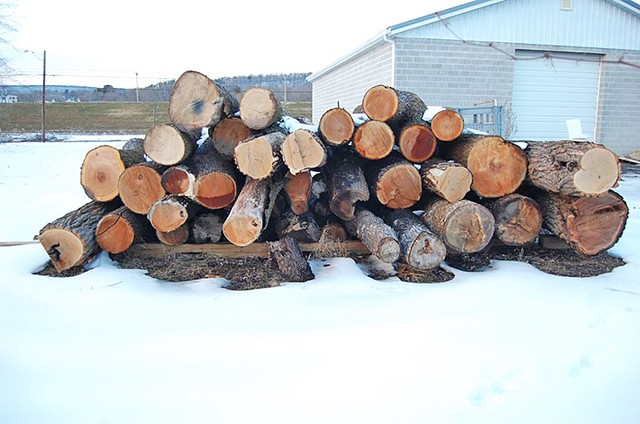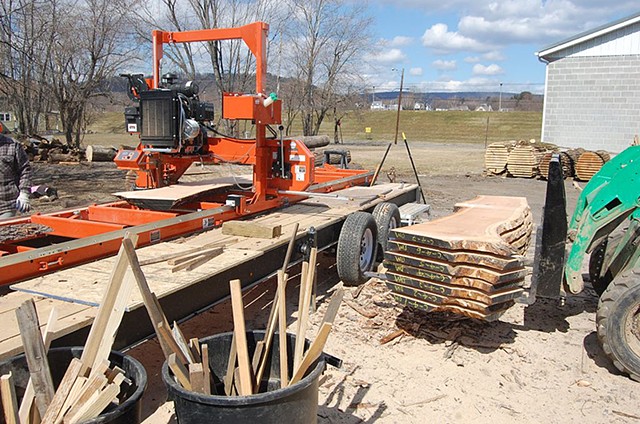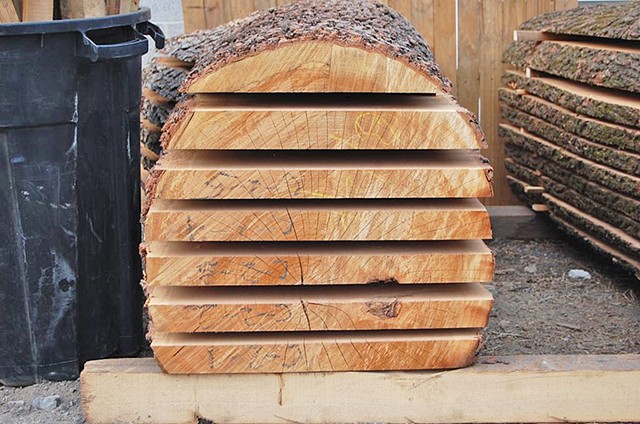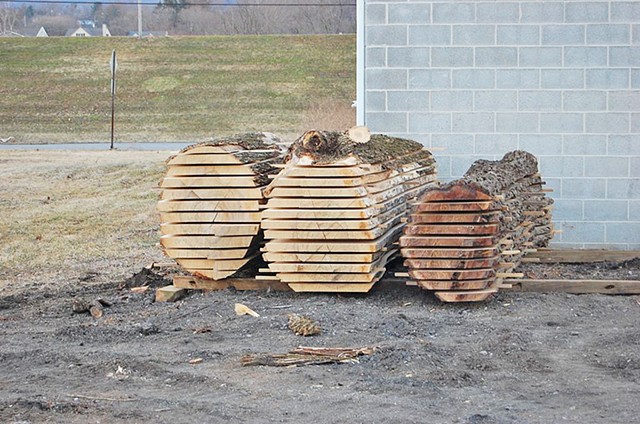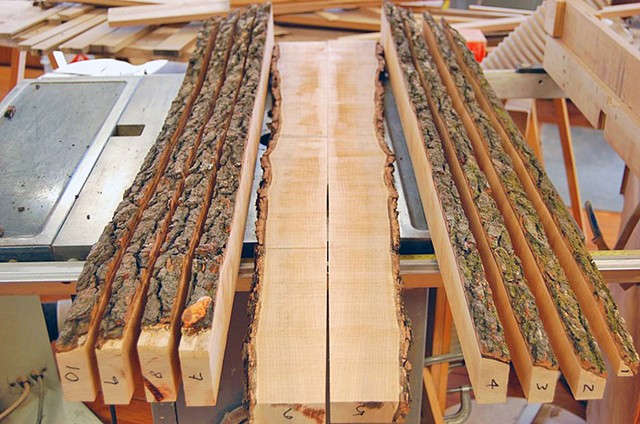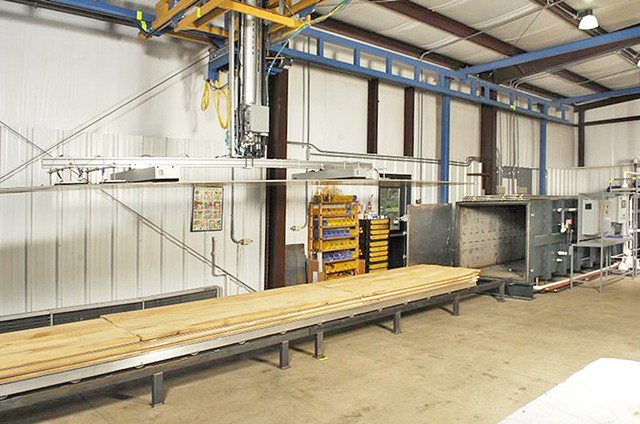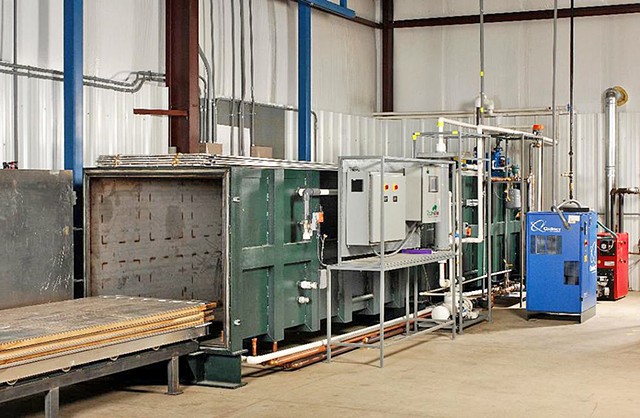Lumber
Since the beginning, I have utilized salvaged lumber, primarily for economic reasons, to supplement my conventional lumber supply. Increasingly, my dependence on unconventional lumber sources has grown, until, at present, it constitutes the majority of my material needs. The logs from which my lumber is sawn come from close at hand.
Very few of these salvaged logs are sourced from standing timber. Nearly all come from urban tree services, power company line crews, home-owner disposal, and storm damage. With near-record rainfall in Central Pennsylvania the last two years, there has been a dramatic increase in the number of wind-fall logs coming to my attention.
The critical components of this sea-change are: the means to extract logs from sensitive landscapes, the means to custom saw them into desired form, and the ability to kiln-dry them. The resulting lumber is sequence matched, color consistent, and has its innate character intact.
Of the aforementioned, the stumbling block has been the extraction of logs from sites that would tolerate little disruption of the landscape. To that end, my son Yuri, has developed a system that accomplishes this task admirably. Local sawyer, Brian Poorman has invested in a large capacity band-saw mill which he runs very capably. My brother, Jan, brings a large chain-saw mill out once a year to saw the really big logs. Dennis Socling, of PCS Vacuum Kilns graciously makes his R&D kilns available to finish the lumber.
There is a minimum of transportation involved. The trees are already either down or in harms way. The mills are portable so the logs can travel to the mill or the mill to the logs. The vacuum kiln process is extremely energy efficient. The logs are being flitch sawn and processed in the bole. The edge cuts and slabs that would, in a conventional lumber operation, end up in the waste pile are being repurposed into furniture components.
Last, but not least, the provenance of the resulting lumber adds its tangible story to the resulting furniture. Often, the trees find their way back to proximity of where they grew. It is a satisfying and timely means of resource utilization.
